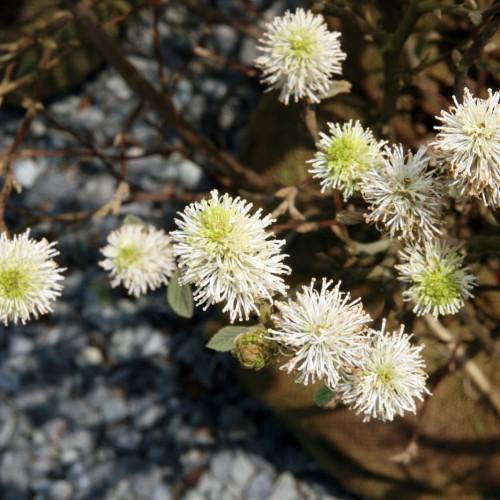
dwarf fothergilla
Fothergilla 'Mount Airy'
Cycle:
Perennial
Watering:
Average
Hardiness Zone:
5 - 8
Flowers:
Flowers
Sun:
Full sun,part shade
Leaf:
Yes
Growth Rate:
Low
Maintenance:
Low
Drought Tolerant:
Yes
Care Level:
Medium
watering
Dwarf fothergilla, also known as Fothergilla 'Mount Airy', should be watered every 10-14 days, or as needed according to the plant's soil moisture. The best way to determine soil moisture is to feel the topsoil with the fingertip or use a moisture meter. Water deeply to ensure that all the roots are receiving enough water. During its active growth season (spring and early summer), water every 10-14 days and slightly more often in hot, dry weather. During the winter dormant period, water only when the soil is dry. This could mean watering only once every 2 months.
sunlight
The Dwarf Fothergilla (Fothergilla 'Mount Airy') is a highly desirable plant species that grows best in an area with plenty of bright, direct sunlight. This species should be placed in a location that receives at least 6 hours of morning sun and afternoon shade. When exposed to too much intense sunlight, the leaves of the plant can become scorched or burnt. During the hottest parts of the day, midday to early afternoon, it is best to keep this plant out of the direct sun.
pruning
Dwarf fothergilla (Fothergilla 'Mount Airy') typically does not need pruning; however, it can benefit from some light pruning to help shape its structure and encourage more flowering. Pruning should take place soon after flowering and should be light and limited. Prune up to 1/3 of old flowers and any dead or diseased branches. Prune in the spring, just after flowering has finished, to avoid removing potential flower buds. When pruning, avoid cutting into bare wood as this may encourage the growth of undesirable shoots. Pruning should also be done selectively to maintain the shrub's natural form.
